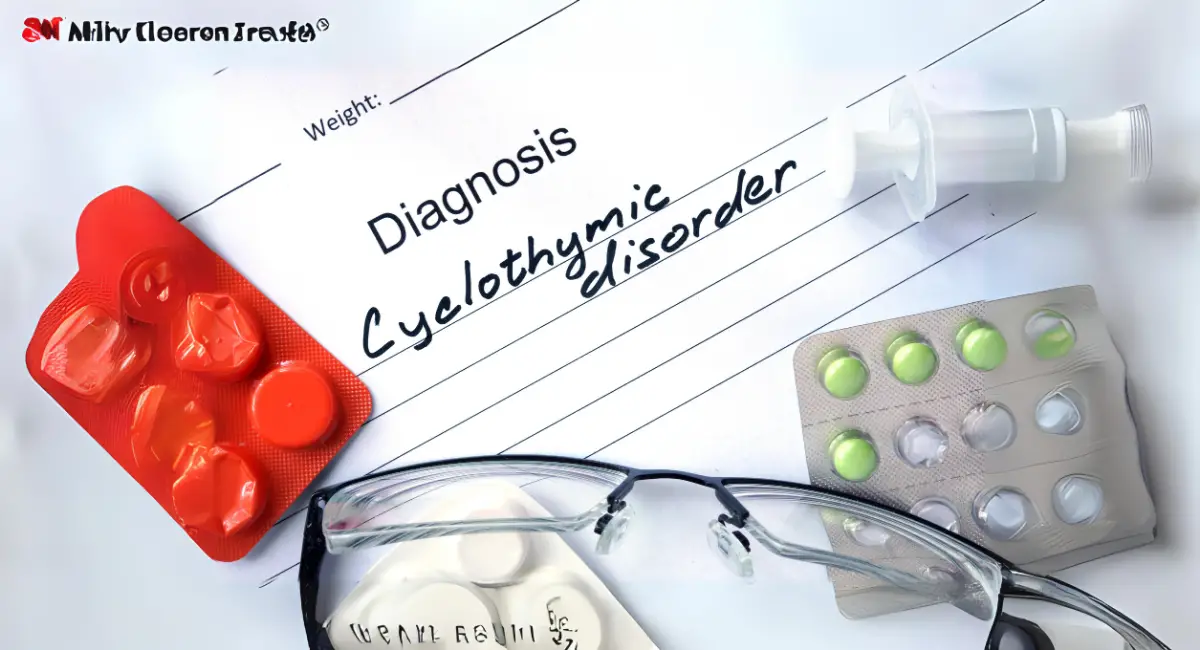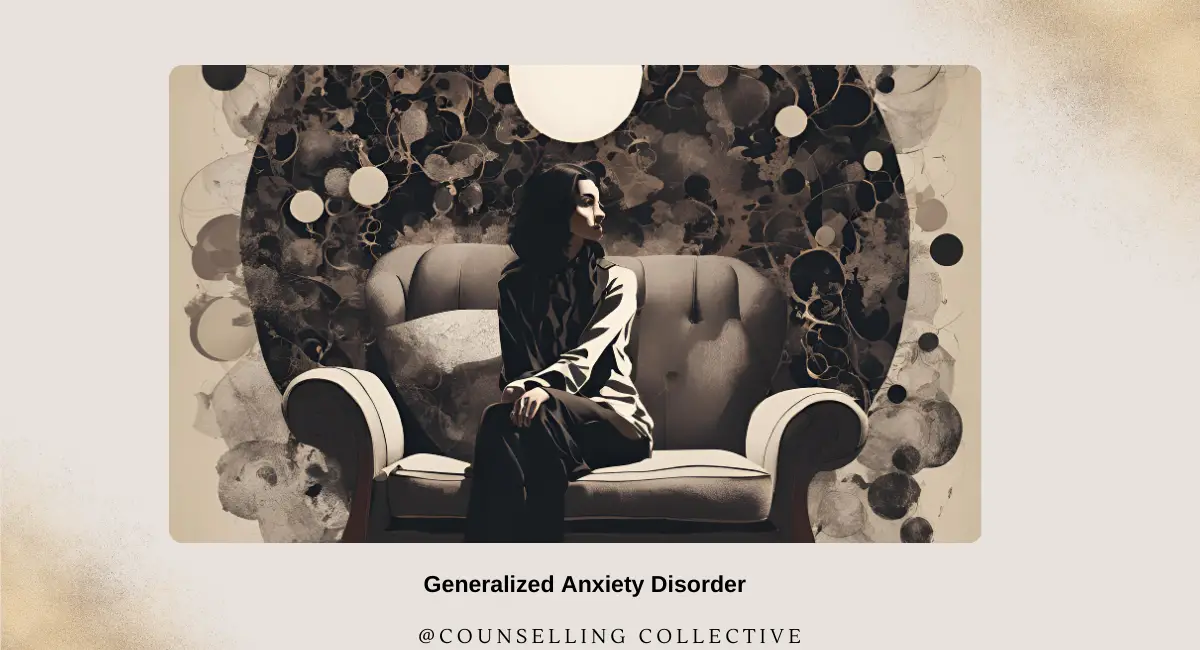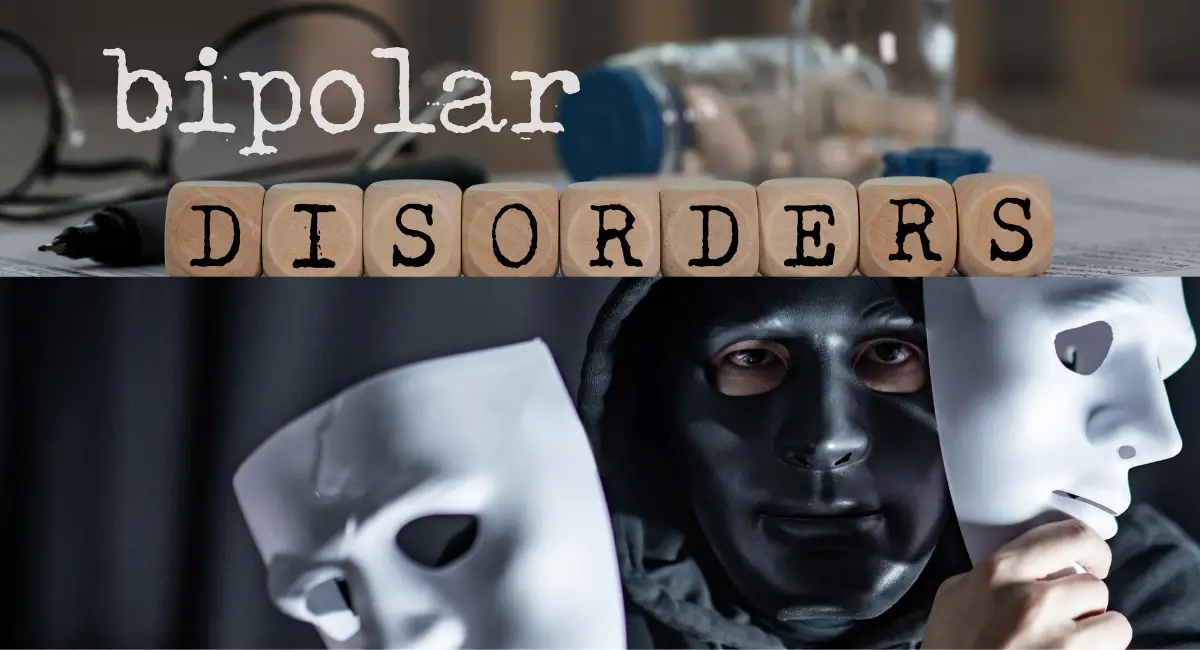
Cyclothymic Disorder Symptoms: Causes, and Therapy Options
Contents
Introduction
Cyclothymic Disorder, also known as cyclothymia, is a chronic mood disorder characterized by fluctuating periods of hypomanic symptoms and depressive symptoms that are less severe than those seen in Bipolar I or Bipolar II Disorder. Individuals with Cyclothymic Disorder experience frequent mood swings, but the highs and lows are not as extreme or as prolonged as full manic or major depressive episodes. Despite the less intense nature of these mood swings, Cyclothymic Disorder can significantly impair a person’s quality of life and functioning.
According to the Diagnostic and Statistical Manual of Mental Disorders, Fifth Edition (DSM-5), Cyclothymic Disorder is defined by periods of hypomanic and depressive symptoms that last for at least two years in adults (or one year in children and adolescents). These symptoms do not meet the full criteria for hypomanic or major depressive episodes but are chronic and disruptive. This article explores the symptoms, causes, and therapy options for Cyclothymic Disorder.
Common Symptoms of Cyclothymic Disorder
Cyclothymic Disorder involves fluctuating symptoms of mood elevation and depression that vary in intensity and duration. Below is a table outlining the common symptoms for each phase, along with real-life examples of how they may manifest:
| Symptom | Description/Example |
|---|---|
| Elevated Mood (Hypomania) | A mildly elevated or irritable mood lasting for days. For example, someone may feel unusually optimistic and energetic, taking on new projects or making impulsive decisions. |
| Increased Activity (Hypomania) | Increased energy and activity levels. For example, someone might work long hours without feeling tired or start multiple new projects at home or work. |
| Decreased Need for Sleep (Hypomania) | Feeling rested after only a few hours of sleep. For example, someone may sleep only three to four hours per night but feel energized and productive throughout the day. |
| Racing Thoughts (Hypomania) | Thoughts move quickly from one idea to another. For example, someone may jump from topic to topic in conversation or struggle to focus on one task. |
| Low Mood (Depression) | Feeling down, fatigued, or hopeless. For example, someone may feel persistently sad or unmotivated, losing interest in activities they once enjoyed. |
| Fatigue (Depression) | Chronic tiredness, even after sufficient rest. For example, someone may struggle to find the energy to complete daily tasks, such as household chores or work duties. |
| Irritability (Depression) | Feeling easily frustrated or annoyed. For example, someone may become irritable over small issues or withdraw from social interactions due to frustration. |
| Concentration Problems (Depression) | Difficulty focusing or making decisions. For example, someone might find it hard to concentrate on work or everyday tasks, leading to procrastination or mistakes. |
Causes and Risk Factors of Cyclothymic Disorder
The development of Cyclothymic Disorder is influenced by a combination of genetic, biological, and environmental factors. While the exact cause is not fully understood, certain risk factors have been identified.
1. Genetic Factors
There is a strong genetic component to mood disorders, including Cyclothymic Disorder. Individuals with a family history of bipolar disorder, depression, or other mood disorders are at a higher risk of developing Cyclothymic Disorder.
- Studies suggest that mood disorders, including cyclothymia, are heritable. Individuals with first-degree relatives (parents, siblings) who have bipolar disorder are more likely to develop Cyclothymic Disorder.
- Genetic variations affecting neurotransmitter regulation, particularly in the brain’s serotonin and dopamine systems, may increase vulnerability to mood instability.
2. Neurobiological Factors
Abnormalities in the regulation of neurotransmitters, such as serotonin, norepinephrine, and dopamine, are associated with mood fluctuations in Cyclothymic Disorder. These chemicals play a key role in mood regulation, energy levels, and cognitive functioning.
- Neuroimaging studies have shown that individuals with Cyclothymic Disorder and other mood disorders may have structural or functional abnormalities in areas of the brain responsible for regulating mood, such as the prefrontal cortex and limbic system.
- Dysregulation of the brain’s reward system may contribute to the impulsivity and mood swings seen in hypomanic phases.
3. Environmental and Psychological Factors
Stressful life events, trauma, or chronic stress can trigger the onset of Cyclothymic Disorder in individuals who are genetically predisposed. Major life changes, such as the loss of a loved one or financial difficulties, may also exacerbate symptoms.
- Environmental stressors, such as childhood trauma, emotional abuse, or neglect, can increase the likelihood of developing Cyclothymic Disorder. Ongoing stress, such as financial instability or relationship issues, can trigger mood episodes.
- Emotional and psychological factors, including poor stress management and coping skills, can contribute to the frequency and intensity of mood swings.
Therapy and Treatment Options for Cyclothymic Disorder
Although Cyclothymic Disorder involves less severe mood swings than Bipolar I or Bipolar II Disorder, it still requires treatment to help individuals manage their symptoms and maintain stability. Below are key treatment options:
1. Cognitive Behavioral Therapy (CBT)
CBT is one of the most effective treatments for Cyclothymic Disorder. This therapy helps individuals identify and challenge negative thought patterns and behaviors that contribute to their mood swings. CBT also teaches coping strategies to manage the ups and downs of the disorder.
Example: Sarah, who experiences frequent mood swings, works with her CBT therapist to recognize the early signs of her hypomanic and depressive phases. Through CBT, she learns how to manage impulsive behaviors during hypomania and develops strategies to cope with feelings of sadness and fatigue during her depressive periods.
2. Interpersonal and Social Rhythm Therapy (IPSRT)
IPSRT is designed to help individuals with mood disorders regulate their daily routines, including sleep, eating, and social activities. By maintaining regular rhythms, IPSRT helps stabilize mood and reduce the likelihood of mood swings.
Example: Mark, who experiences irregular sleep patterns during both hypomanic and depressive phases, works with his IPSRT therapist to develop a consistent daily routine. By adhering to regular sleep and activity schedules, Mark is able to reduce the intensity of his mood swings and improve his overall functioning.
3. Mindfulness-Based Cognitive Therapy (MBCT)
MBCT combines mindfulness practices with cognitive therapy to help individuals become more aware of their thoughts and feelings without becoming overwhelmed by them. This approach is particularly useful for individuals who experience frequent mood swings, as it helps them stay grounded during emotional highs and lows.
Example: John, who struggles with the rapid shifts between hypomanic and depressive phases, practices mindfulness techniques to observe his thoughts without judgment. Through MBCT, he learns to remain calm and focused during mood fluctuations, preventing impulsive decisions during hypomanic phases and managing feelings of sadness during depressive phases.
4. Pharmacotherapy (Medication Management)
Medications such as mood stabilizers, including lithium or anticonvulsants, may be prescribed to help regulate mood swings in individuals with Cyclothymic Disorder. While antidepressants may be used cautiously to manage depressive symptoms, they can sometimes trigger hypomanic episodes, so they must be monitored closely.
Example: Sarah is prescribed a mood stabilizer to help manage her frequent mood swings. Her psychiatrist carefully monitors her medication to ensure that it reduces her hypomanic and depressive symptoms without causing adverse effects or worsening her mood instability.
Long-Term Management of Cyclothymic Disorder
Cyclothymic Disorder is a chronic condition that requires ongoing management to prevent mood swings and maintain stability. Below are key strategies for long-term management:
- Medication Adherence: Regularly taking prescribed mood stabilizers is essential for managing mood fluctuations and preventing the onset of hypomanic or depressive phases.
- Regular Therapy: Continued engagement in therapy, such as CBT or MBCT, helps individuals develop and maintain coping strategies for mood regulation.
- Consistent Routine: Maintaining a stable daily routine, including regular sleep, meals, and activities, helps reduce the likelihood of mood swings.
- Support Networks: Staying connected with supportive family, friends, or support groups provides valuable emotional support and accountability.
- Monitoring for Relapse: Identifying early warning signs of mood changes allows for timely intervention, preventing full-blown episodes and ensuring ongoing mood stability.
Conclusion
Cyclothymic Disorder is a chronic mood disorder characterized by fluctuating periods of hypomanic and depressive symptoms that can significantly impact daily functioning. While the mood swings in Cyclothymic Disorder are less intense than those seen in Bipolar I or II Disorder, they are still disruptive and require treatment. With the right combination of therapies—such as Cognitive Behavioral Therapy, Interpersonal and Social Rhythm Therapy, and Mindfulness-Based Cognitive Therapy—along with medication management, individuals with Cyclothymic Disorder can manage their symptoms and improve their quality of life. Long-term management strategies, including consistent routines and ongoing therapy, are essential for maintaining emotional stability and preventing relapse.
References
- American Psychiatric Association. (2013). Diagnostic and Statistical Manual of Mental Disorders (5th ed.). Washington, DC: American Psychiatric Publishing. Link
- Miklowitz, D. J. (2011). The Bipolar Disorder Survival Guide: What You and Your Family Need to Know. Guilford Press.
- Nolen-Hoeksema, S. (2014). Abnormal Psychology. McGraw-Hill Education.
- Craske, M. G., & Barlow, D. H. (2007). Mastery of Your Anxiety and Depression: Workbook (Treatments That Work). Oxford University Press.
- Hofmann, S. G., & Smits, J. A. J. (2008). Cognitive-behavioral therapy for adult anxiety disorders: A meta-analysis of randomized placebo-controlled trials. Journal of Clinical Psychiatry.
Explore Other Mental Health Issues







